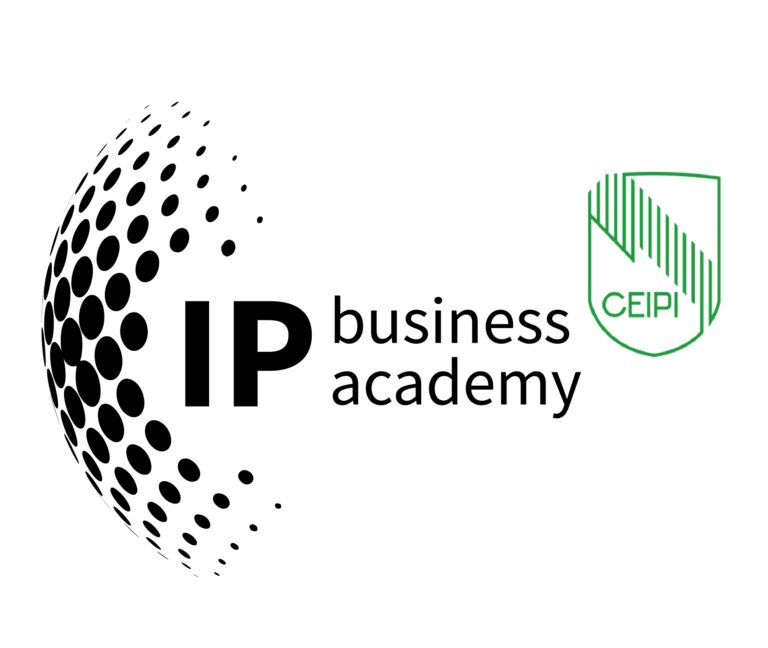PILZ: AI-Supported White Spot Analysis
In today’s rapidly evolving technological landscape, the ability to identify untapped opportunities for innovation is more critical than ever. White spot analysis, a method for identifying potential areas for innovation within the patent landscape, has become an indispensable tool for businesses seeking to maintain a competitive edge. However, traditional white spot analysis methods present challenges, including significant time and resource demands, the complexity of the patent landscape, the need for specialized expertise, and difficulties in interpretation and implementation.
Recognizing the benefits of white spot analysis despite these challenges, forward-thinking companies like PILZ are now effectively using it in their innovation and IP management strategies. As highlighted in a lecture by Jürgen Wüllrich, head of patents at PILZ, at the 4th VDI/VPP seminar “IP in Innovation Processes” in the Düsseldorf Industry Club, the company is leveraging this methodology to enhance its IP strategy and drive innovation.
PILZ GmbH & Co. KG: A Leader in Automation and Safety
PILZ provides a range of automation solutions, including products, systems, and services, with a strong emphasis on safety in automation. The company’s offerings encompass controllers, sensor technology, drive technology, operating and monitoring systems, and software. PILZ distinguishes itself as a 100% family-run, medium-sized company, which allows for financial independence, rapid decision-making, a focus on long-term corporate success, and the reinvestment of profits for continued growth. With a strong international presence, PILZ serves its customers through 42 subsidiaries and 27 sales partners, demonstrating its commitment to customer focus and its role as a global provider of safe automation solutions.
Intellectual property is important to PILZ, and its patent department, operational since 2008, protects the company’s innovations. PILZ currently maintains around 250 active patents, reflecting its dedication to innovation and IP protection.
Understanding White Spot Analysis
White spot analysis is a strategic methodology employed to identify potential innovation opportunities within the intricate landscape of patents. At its core, it’s about uncovering untapped potential – areas where innovation can flourish and where intellectual property can be secured. The fundamental concept revolves around the identification of “white spots,” a term borrowed from the field of cartography.
In cartography, white spots traditionally referred to unexplored or uncharted territories on a map – regions that were unknown or lacked detailed information. This analogy is powerfully relevant to the realm of intellectual property. In the IP context, white spots represent unexploited or underdeveloped areas within a specific technology domain or industry. These are the spaces where innovation can occur with less competition and where new patents can be obtained, potentially leading to significant market advantages.
The primary objectives of white spot analysis are multifaceted and strategically crucial for any organization focused on innovation and growth:
- Identification of Patenting Potentials: At the forefront, white spot analysis aims to pinpoint areas where new inventions and technologies can be patented. This is essential for expanding an organization’s IP portfolio, securing a competitive edge, and establishing a strong market position. By identifying white spots, companies can proactively develop and patent innovations before competitors, creating barriers to entry and freedom to operate.
- Support for Strategic IP Decisions: White spot analysis provides valuable insights that inform strategic decision-making related to intellectual property. This includes decisions on research and development (R&D) investments, product development roadmaps, market entry strategies, and IP licensing. By understanding where the white spaces are, companies can align their IP strategy with their overall business objectives, maximizing the return on their innovation efforts.
- Generation of Patentable Ideas: Beyond simply identifying existing white spots, this analysis can also stimulate the generation of entirely new patentable ideas. By highlighting areas where innovation is lacking or where existing technologies can be improved, it provides a fertile ground for inventors and R&D teams to conceive novel solutions and inventions.
The applications of white spot analysis are diverse and span several critical business functions:
- Innovation Management: White spot analysis is a vital tool for innovation management, helping organizations to strategically direct their innovation efforts. It enables companies to identify emerging trends, anticipate future market needs, and allocate resources to the most promising areas of innovation. By focusing on white spots, companies can increase the efficiency and effectiveness of their innovation processes, leading to the development of more successful products and services.
- Technology Scouting: Technology scouting, the process of systematically searching for external technologies that could be relevant to a company’s business, benefits greatly from white spot analysis. It helps technology scouts to identify areas where external technologies could fill gaps in a company’s own IP portfolio or provide opportunities for collaboration or acquisition.
- Competitive Analysis: Understanding the competitive landscape is crucial for any business. White spot analysis provides a unique perspective on competitive analysis by revealing areas where competitors are not actively patenting or innovating. This information can be used to identify opportunities to differentiate products and services, develop niche market strategies, or avoid potential patent infringement issues.
In essence, white spot analysis empowers IP professionals and organizations to move from a reactive to a proactive IP strategy. Instead of simply responding to competitive pressures, they can anticipate future trends, shape the direction of innovation, and secure a strong IP position.
Traditional White Spot Analysis: Challenges and Limitations
Traditional white spot analysis typically involves a series of steps:
- Definition: Clearly defining the objectives of the analysis.
- Data Collection: Gathering relevant data for the analysis.
- Analysis: Examining the data to identify patterns.
- Data Visualization: Presenting the data in a visually comprehensible manner.
- Interpretation and Conclusion: Drawing meaningful conclusions from the data.
- Action Plan and Implementation: Developing and implementing an action plan based on the conclusions.
However, manual white spot analysis presents several challenges:
- Time and Resource Intensive: It requires significant time and resources.
- Complexity of the Patent Landscape: The sheer volume and complexity of patent data can be overwhelming.
- Need for Expertise: It necessitates specialized knowledge and expertise.
- Difficulties in Interpretation: Interpreting and implementing the results can be challenging.
The Advent of AI-Powered IP Management Solutions
To overcome the inherent limitations of traditional methodologies, the field of IP management is increasingly embracing the transformative potential of AI solutions. These AI-driven tools are not merely incremental improvements; they represent a fundamental shift in how IP professionals operate, enabling greater efficiency, accuracy, and strategic insight. AI empowers IP professionals to navigate the complexities of the patent landscape with unprecedented effectiveness.
Here’s a breakdown of the key capabilities offered by AI in this domain:
- Research Tools: AI-powered search tools can efficiently and rapidly navigate the vast and ever-expanding universe of patent databases. These tools go beyond simple keyword searches, employing sophisticated algorithms to understand the nuances of language and the technical context of inventions, significantly accelerating the search process and improving the precision of results.
- White Spot Analysis Tools: At the core of this discussion, AI algorithms can automate and enhance the identification of white spots. By analyzing patent data, including patent classifications, citations, and technological trends, AI can pinpoint areas of low patenting activity or emerging fields with high innovation potential, providing IP professionals with actionable insights.
- Patent Monitoring Tools: AI facilitates the continuous monitoring of patent landscapes, enabling real-time awareness of competitive activities and emerging technological trends. This proactive approach allows companies to quickly adapt their IP strategies and capitalize on new opportunities.
- IP Portfolio Management Systems: AI assists in the management and optimization of IP portfolios, streamlining administrative tasks, automating workflows, and providing valuable analytics to support strategic decision-making. These systems can help companies to better organize, evaluate, and leverage their IP assets.
- AI-driven Patent Classifiers: AI can automatically categorize patents based on their technological content, using machine learning techniques to analyze patent text and drawings. This automation streamlines the classification process, saving time and improving the accuracy of patent categorization, which is essential for various IP management tasks.
In essence, AI is revolutionizing IP management by providing tools that enhance analysis, automate tasks, and support strategic decision-making.
Addressing Concerns and Ensuring Security
While AI offers immense potential, it also raises concerns:
- Anxieties: Some may fear job displacement or the over-reliance on technology.
- Security: Ensuring the security and confidentiality of sensitive IP data is paramount.
It is crucial to address these concerns proactively by emphasizing the collaborative nature of AI in IP management and implementing robust security measures.
Case Study: AI-Supported Risk Assessment in Machine Safety
The lecture at the VDI/VPP seminar included a compelling case study that illustrated the application of AI-supported white spot analysis in the context of automated risk assessment for machine safety.
The Challenge: Automating Risk Assessment
Assessing the safety risks associated with machinery is a complex and critical task. It involves considering various factors, such as safety distances and potential hazards. The challenge lies in automating this process to ensure accuracy and efficiency.
The Solution: The “Marble Method”
The “marble method” was presented as a solution to this challenge. This method involves simulating the reachability of a machine’s danger zone in a virtual environment. By modeling the machine and its surrounding environment, it is possible to determine the accessibility of danger points and assess the associated risks.
AI-Driven White Spot Analysis for Solution Evaluation
AI-supported white spot analysis is not just for identifying broad areas of opportunity; it also plays a crucial role in evaluating specific proposed solutions. In the case study presented, this methodology was used to assess the “marble method” for automated risk assessment in machine safety. The process involves a systematic evaluation:
- Feature Decomposition: The first step is to break down the proposed solution into its core components or features. This involves identifying the essential elements that contribute to the solution’s functionality and effectiveness. A detailed feature decomposition allows for a granular analysis of each aspect of the invention.
- Patent Search: Once the features are defined, a comprehensive search is conducted to identify existing patents that relate to those features. This search serves several purposes:
- Novelty Assessment: Determining whether the proposed solution is truly novel and inventive.
- Infringement Risk: Identifying potential risks of infringing on existing patents.
- State-of-the-Art Analysis: Understanding the current technological landscape and identifying alternative solutions.
- Feature Modification: Based on the findings of the patent search, the features of the proposed solution may be modified or refined. This iterative process aims to optimize the solution, enhance its patentability, and minimize infringement risks.
- White Spot Identification: Finally, AI-driven analysis is used to identify any remaining white spots or untapped areas for further innovation. This step can reveal opportunities to expand the scope of the invention, develop new applications, or create complementary technologies.
The Role of Automated White Spot Analysis in AI-Based Ideation
Automated white spot analysis is a powerful catalyst for AI-based ideation, driving the generation of novel and patentable ideas. AI tools can analyze vast amounts of data to identify patterns and trends that might be missed by human observers, uncovering hidden opportunities for innovation.
Tools like dIPlex exemplify this approach, providing AI-assisted ideation processes that streamline the creation of new inventions. These platforms often incorporate:
- Creativity Techniques: AI systems can be integrated with structured creativity techniques to stimulate the generation of ideas. By providing prompts, suggesting analogies, or challenging assumptions, AI can help inventors to break free from conventional thinking and explore new possibilities.
- Knowledge Graphs: AI can leverage knowledge graphs to connect seemingly disparate concepts and identify unexpected relationships. This capability can spark the creation of inventions that combine existing technologies in novel ways or address unmet needs in the market.
In essence, automated white spot analysis empowers inventors and organizations to move beyond incremental improvements and pursue truly disruptive innovations.
Conclusion
AI-supported white spot analysis represents a paradigm shift in IP strategy. By automating and enhancing the traditional white spot analysis process, AI empowers IP professionals to identify untapped innovation opportunities more efficiently and effectively. As AI technology continues to advance, its role in shaping the future of IP management will only grow more significant.
The Speaker: Jürgen Wüllrich
 Jürgen Wüllrich has been head of the patent department at Pilz GmbH & Co. KG for many years. Prior to that, he held several positions in development and sales, including a few years in China. As an engineer by training, he is particularly interested in the automation and rationalization of tasks in the patent department. He is convinced that AI is not (just) a buzzword, but that it will gradually become part of our everyday lives – both privately and professionally. The meaningful use of AI and how to handle it securely will increasingly become one of the core competencies in the coming years.
Jürgen Wüllrich has been head of the patent department at Pilz GmbH & Co. KG for many years. Prior to that, he held several positions in development and sales, including a few years in China. As an engineer by training, he is particularly interested in the automation and rationalization of tasks in the patent department. He is convinced that AI is not (just) a buzzword, but that it will gradually become part of our everyday lives – both privately and professionally. The meaningful use of AI and how to handle it securely will increasingly become one of the core competencies in the coming years.



